#fever pitch 1997
Text
violet bridgerton enjoyers, i present to you, ruth gemmell in ‘fever pitch’ (1997)
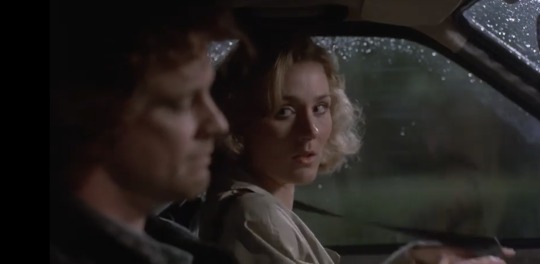
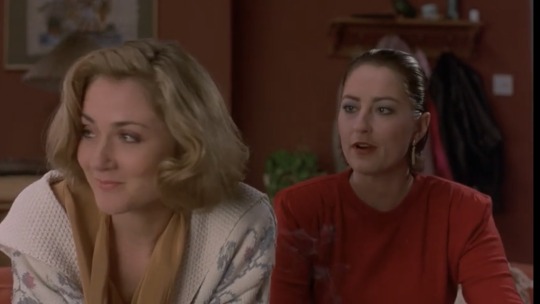
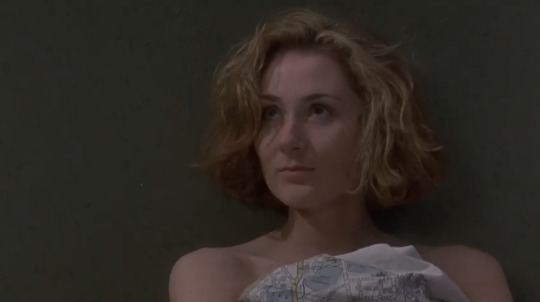

yes, that’s colin firth. i’ve seen this about 30 times. it’s how i got into bridgerton, i saw this and was looking for other stuff ruth had been in!
#fever pitch#fever pitch 1997#ruth gemmell#violet bridgerton#god i love this silly little football film
26 notes
·
View notes
Text






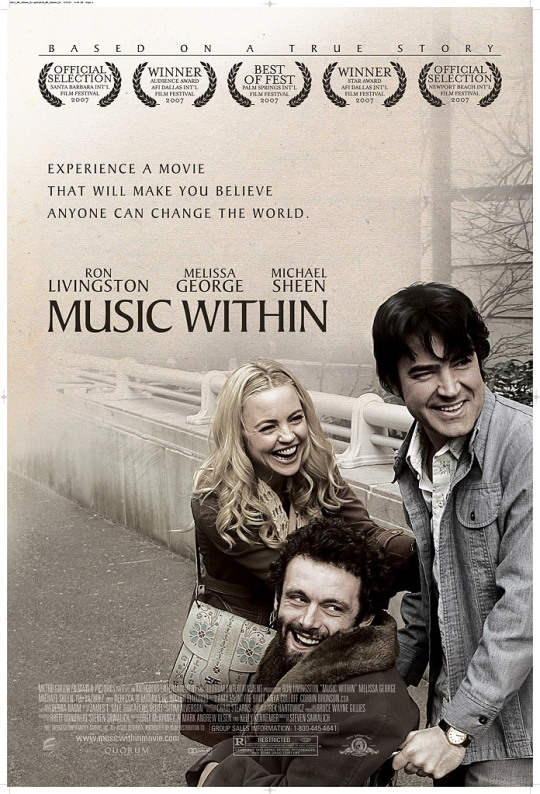


9 favorite movies of 2023! (I assume we are talking about movies I watched in 2023, not films released in 2023 because I only have one of those)
tagged by bestie @snugsunresplendence
in order in which I watched them:
But I'm a Cheerleader (1999)
Teen romantic comedy about a young lesbian girl sent to conversion camp. Funny, sad, sweet, inspiring, sort of wish there were a lot more films like this because it warmed my little heart.
Barbie (2023)
Everything that could be said about this film has already been said because people wouldn't shut up about it for months. For my two cents, I thought it was very well made and the script was good.
Women On the Verge of a Nervous Breakdown (1988)
One of Almodovar's finest, it is hilarious but also avant-garde, dramatic (the way a soap opera is dramatic) but also very real and it's just beautiful to watch.
Fever Pitch (1997)
Colin Firth stars in this very British story written by Nick Hornby, about a man who really likes his favourite football team. It's funny, romantic, rings very real and also Colin Firth plays working class background remarkably well.
Underworld (2003)
Dark, gritty, fun. Vampires, werewolves, guns. Action-packed, satisfying level of lore, good performances. Michael Sheen.
Heartlands (2002)
Heartwarming, sweet, inspiring, it's a road movie about a man who rides his moped all the way to the big city to win back his wife and suddenly realizes how big and wonderful the world is. Michael Sheen.
Music Within (2007)
Based on the real story of how veteran Richard Pimentel became a disabled rights activist and helped pass the Americans with Disabilities Act. Inspiring, funny, occasionally heartbreaking. Michael Sheen (actually steals the show as Art Honeyman).
7 Days In Hell (2015)
Quite possibly THE funniest thing I watched in 2023. Mockumentary about two fictional tennis players (played by Andy Samberg and Kit Harrington), playing a match that lasts a whole week. There is not much to be said here, except that it was HILARIOUS. Michael Sheen (also steals the show for me).
Beautiful Boy (2010)
Not to be confused by the 2018 film of the same name. This one is about a couple whose son has committed a mass shooting and then killed himself. It completely avoids any sort of sensationalism. The most dramatic moments happen off-screen. It is a study in the cruelty of time and how life has to go on, even in the face of great tragedy. I couldn't stop crying in the end. Michael Sheen.
TAGGING: @gothic-goon , @luuu37 , @queenlovett , @ineffableloverboy, @oceanwithinsblog (as usual: no pressure)
#films#michael sheen#yeah he was my most watched actor#we've established that#favourite films of 2023#tag thing
8 notes
·
View notes
Text



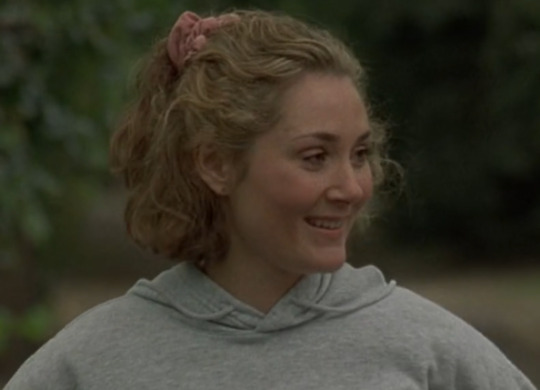

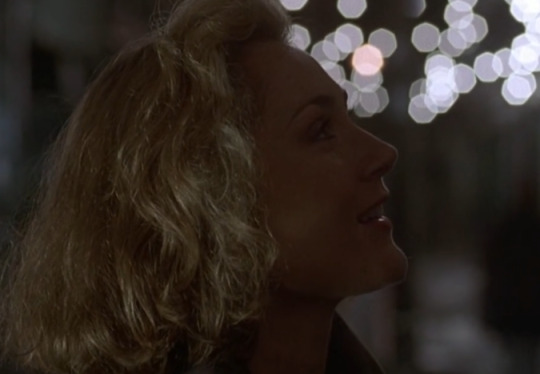

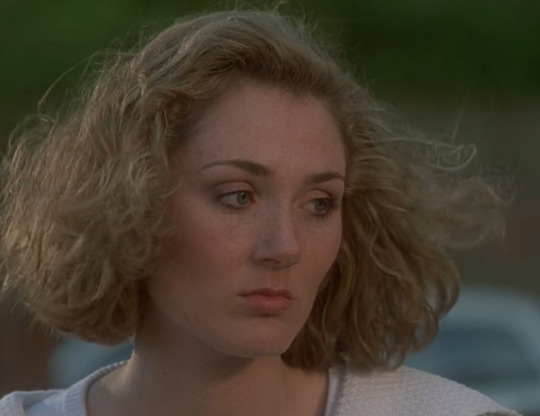
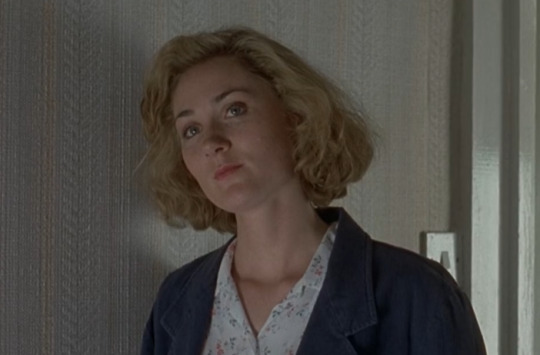
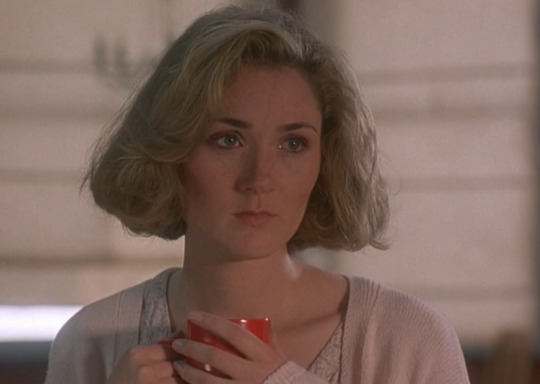
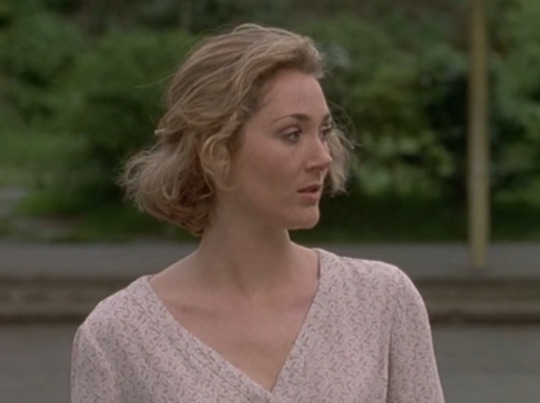
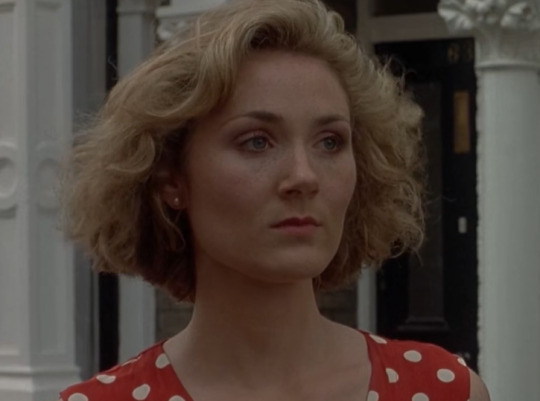
~✿ Soft ✿~
Ruth Gemmell as Sarah Hughes
Fever Pitch (1997) dir. David Evans
#ruth gemmell#fever pitch#beautiful people#there’s something about her in this film that’s so delightfully soft and feminine#my brain just goes ‘pretty pretty pretty pretty’ the whole time#I should edit these but I’m not gonna#I’m not that committed to creating content for her yet#but it may come to that
21 notes
·
View notes
Text

4 notes
·
View notes
Text
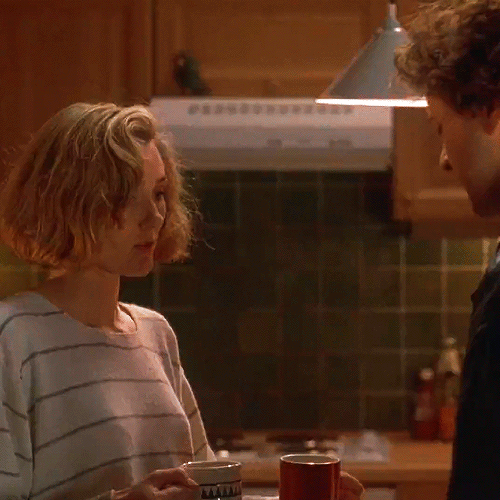
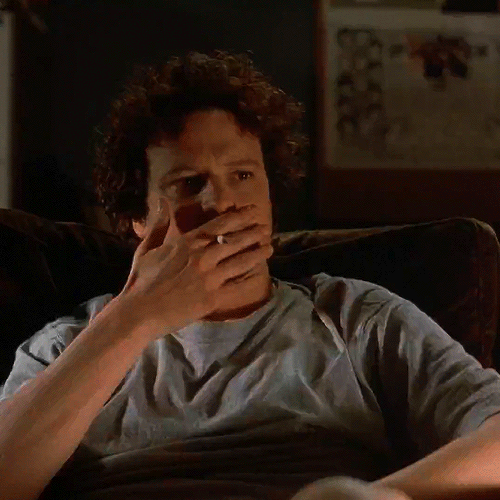


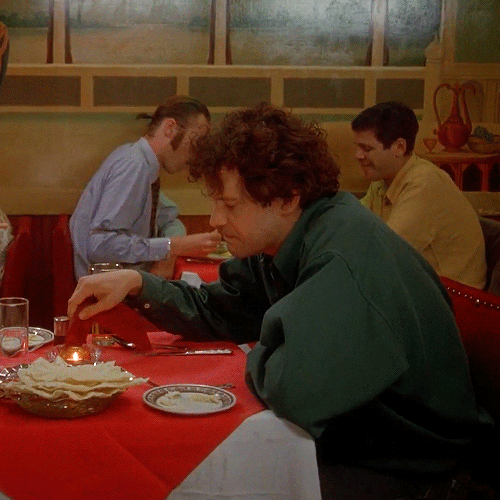
COLIN FIRTH as Paul Ashworth
Fever Pitch (1997) | dir. David Evans
24 notes
·
View notes
Text
Listed: Al Karpenter

Al Karpenter was originally Álvaro Matilla (from Barakaldo). In 2014, Mattin started to collaborate with him and in 2022, Marta Sainz and Enrique Zaccagnini from Santander joined. They’ve spent the years post-COVID in a fever pitch of noise collaboration, working with fellow experimenters Sunik Kim, Dominic Coles and Triple Negative on their album The Forthcoming and with CIA Debutante on another self-titled disc. Jennifer Kelly reviewed both in August, writing that, “Al Karpenter swamps threads of song in seething banks of noise and dissonance. You find yourself focusing on blaring surface noise, while sense and melody percolates somewhere underneath.” Here Mattin picks ten boundary-pushing favorites.
El Inquilino Comunista — “Cruel Off” (1992)
youtube
This track was actually in their first tape, which for me, was probably the best thing to come out of Getxo Sound, a small noise rock scene that happened in my hometown around the early 1990s. I remember getting this cassette and being blown away. I got inspired to see that there were bands doing things like this in my surroundings. Then I found out about other great bands like Cancer Moon, La Secta, Lord Sickness and Pop Crash Colapso. Now some of the members of El Inquilino Comunista play in other bands like Basurita and Trampas (where my very good friends Piji and Pablo play).
Hanne Boenisch — A Journey to the North Pole: A documentary about the Scratch Orchestra and Cornelius Cardew. (1971)
youtube
This documentary portrays the last tour of the Scratch Orchestra and the heated debates that they were going through, but also it documents the amazing experiments and street concerts that they were doing. After this tour, a split happened between the more Maoist-influenced section called the ideological group around Cardew, John Tilbury and Keith Rowe and the more anarchist and performative tendency that went into forming the Slippery Merchants. The tension between the artistic and ideological parts and their split reminds me of the division that occurred with Situationist International in 1961, in Gothenburg, where all the artists were expelled from the group.
Junko — Sleeping Beauty (2002)
youtube
I heard this record at Taku Unami’s house when I was on tour in Japan for the first time in 2004. I knew Junko from Hijokaidan, but this solo recording really cut through everything that I listened to before. It could be said to be concrete poetry or noise, but for me is something else that takes an existential level. What are we as humans when communication becomes only lubrication for commodification? This is not a form of primal scream but rather an expression of the impossibility of meaningful existence under capitalism.
Parmentier — Luxsound: 5 Untitled (1998)
youtube
Rosy Parlane and Dion Workman formed Parmentier when Thela — the New Zealand noise rock they both had with Dean Roberts — disbanded after a legendarily chaotic concert in New York in 1997. Parlane and Workman left their rock instruments and started an excellent electronic label called Sigma Editions and their band Parmentier. I saw them live in 1999 at the Sprawl in London, and I was so moved by this amazingly precise electronic music but made with a New Zealand noisy attitude which gave it a very warm character. I ended up becoming very good friends with Rosy, Dion and Dean and collaborating with all of them on different occasions.
Constant Pain — Demon Lover
youtube
Another band from New Zealand with Cameron Bain, Greg Cairns and Roddy Pain.
Cameron lived in London and used to play in the bands The Mean Streaks and Heliogabalus with Matthew Hyland (of Triple Negative). Roddy also had a short-lived band called Evil with Liz Matthews and David Mitchel, which was simply incredible. Both Cameron and Roddy took the rock spirit seriously, unfortunately to its ultimate consequences. Noise rock made with love and integrity.
Roberta Settels — “Landscape With 3 Tape-recorders And…” (1985)
youtube
I got this record, Isolation! Meinhof In Memoriam, when I was living in Stockholm, and I thought it was the coolest record ever. Settles self-published it on her label Music in Crisis after Caprice Records — an institutional label part of Musikverket (Swedish Performing Arts Agency) — refused at the last minute to publish it because they were scared of the political message of the record. Some of it reminds me of what the composer Bernhard Günter was doing in the 1990s but without any of the esoteric connotations. For me, this is a great example of how avant-garde music can meet radical politics.
Batile Alake — The Waka Queen
youtube
When Xabier Erkizia and I got to Lagos in 2014 to record Billy Bao’s Lagos Sessions, the first thing that we did was to go to Jazzhole record shop. The owner Kunle Tejuoso started to play us all these amazing records of Sakara, Apala and Waka Music at full volume, and Alake really struck a chord in us. For some reason, later on, Kunle would not tell the name of Alake as if she were some sort of sacred secret. Somehow, we managed to find out who she was, and since then, we have been in love with her.
Petrona Martinez — Le bullerengue (1998)
youtube
After that experience in Lagos, I have been searching for similar sounds that focus on percussion and voice in other places by tracing Afro-Caribbean music. The first thing that I got into it was Cuban rumba, especially Muñequitos de Matanzas. A couple of years ago, I was hearing a DJ session of Amuleto Manuela, an incredible Colombian DJ based in Berlin, and she played Petrona Martinez which is bullerengue from Colombia, and this got me into similar forms of music like Puerto Rican Bomba of el tambor from Venezuela.
Gérard Lockel — Gwo Ka Modènn (A.D.G.K.M - 1988)
youtube
Another interesting musical genre from the Caribbean is Gwo Ka from Guadalupe.
I discovered Gérard Lockel when I was researching Bèlènou, a fascinating group from Martinique mixing traditional Bèlè with avant-garde approaches. Bèlènou was founded by Edmond Mondésir and Léon Bertide, and I read that they were influenced by Gérard Lockel, so I went to the source, and it was life-altering. I quickly found out that I was not the only one deeply touched by his music, his records cost between 300 and 600 euros on Discogs.
Elvin Brandhi — Shelf Life (2019)
youtube
My friend Miguel Prado mentioned Elvin Brandhi, and she is doing some of the best stuff that I heard lately. She is collaborating with incredible artists and travelling all the time. A noise nomad and a fantastic improviser. The first time that I saw her was with Yeah You — the group that she has with her father — at an empty shopping mall in Glasgow as part of the extraordinary Counterflows festival, and it was magnificent. As far as I know, this is her only solo record.
#dusted magazine#listed#al karpenter#mattin#El Inquilino Comunista#Hanne Boenisch#cornelius cardew#scratch orchestra#junko#parmentier#constant pain#roberta settels#batile alake#petrona martinez#gérard lockel#elvin brandhi#Youtube
2 notes
·
View notes
Text

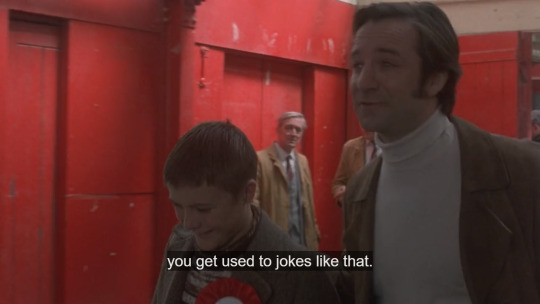
fever pitch (1997)
#joke = the referee#got it#we move yeah#still love this clown fc#🔴⚪#fever pitch#movie quotes#movie#cinema#colin firth#ruth gemmell#neil pearson#nick hornby
8 notes
·
View notes
Link
0 notes
Text
Ben Affleck only regrets one movie: Daredevil. That’s what the actor once told Playboy about the 2003 superhero misstep. “It just kills me,” said Affleck. “I love that story, that character, and the fact that it got f***ed up the way it did stays with me.” Released on 14 February 2003, Daredevil was an attempt at a darker, grittier superhero film – gritty in a pre-Nolan sort of way, at least. It tells the story of blind lawyer Matt Murdock, who avenges his murdered father (that old chestnut) by cleaning up the grubby streets of Hell’s Kitchen. Blinded as a child by toxic goop, Murdock has enhanced senses as an adultre, which manifest as a kind of super-powered radar. Twenty years on from its release, Daredevil looks like a proto-franchise player – an attempt to get a Marvel movie series off the ground before filmmakers had quite figured out the formula. It leaves it an unwieldy if occasionally interesting relic.
Daredevil’s divisive reputation is neatly summed up by its most offending article: Affleck’s fanboy-riling leather suit, which was very much not the spandex version of the source material. Even Charlie Cox, who has played Daredevil since 2015 in both an eponymous Netflix series and the MCU – most recently cameoing in Spider-Man: No Way Home – once commented that “the suit sucks”. What fans didn’t know was that writer-director Mark Steven Johnson had to fight with the studio for any costume. For Johnson – a diehard Daredevil fan – production was “a non-stop battle.” The executives wanted to replicate the success of Sam Raimi’s Spider-Man – released a year earlier – but didn’t understand the Daredevil character. “They didn’t want a costume,” he later said. “They didn’t want horns. They didn’t want anything.”
Like other superhero films, Daredevil was in the works for several years before Affleck finally suited up. Marvel was in financial peril in the 1990s and hadn’t yet started to produce its own films. Film adaptations of their biggest characters stalled. Twentieth Century Fox nabbed the rights to the X-Men in 1993, though the film didn’t reach cinemas until 2000. Sony picked up Spider-Man after a years-long web of complicated rights wrangling. The eventual films, however, were super-sized hits. The Los Angeles Times wrote that “franchise fever” had seized Hollywood.
Twentieth Century Fox had optioned Daredevil in 1997, with Chris Columbus (of Home Alone and Harry Potter fame) in line to direct. When that didn’t work out, Disney flirted with buying the rights but soon dropped out of contention (amusing, considering that Disney now owns Marvel and, subsequently, the rights to Daredevil). The character went to Sony, then New Regency – with Twentieth Century Fox distributing. Johnson, who’d first been hired to write the script at Sony, had to pitch to get back onboard the project. Studio executives were unsure if he was the man for the job. Johnson had written the Grumpy Old Men movies and, at the time, had just one directing credit to his name – the quiet 1998 comedy-drama, Simon Birch.
Kuljit Mithra, who launched the popular Daredevil fansite Man Without Fear back in 1996, tells me that Johnson contacted him at the time. “He said, ‘I’ve got some stuff I want to run by you’,” says Mithra. “Back then, it wasn’t like everybody was an insider! He emailed me storyboards. He sent me all this three years before it was even greenlit. He asked me how it looked.”
Back then, Daredevil was still a niche hero, despite being created by Stan Lee and Bill Everett in 1964, Marvel’s golden age for superhero creation. “I read the comics as a kid,” says Mithra. “As I got older, I noticed that Daredevil was in his own world – he didn’t cross over with a lot of other titles. But he seemed to attract the best writers and artists. They’d always ask to try Daredevil because he was not a high-prestige character. Marvel was like: “Does somebody want to work on this character? We’ll just print it.”
In the 1980s, Daredevil got a gritty reinvention with writer Frank Miller. Mark Steven Johnson drew mostly from Miller’s stories. If anything, says Mithra, the film may follow Frank Miller’s stories – which featured many of Daredevil’s closest allies and villains – a bit too closely. “I think he tried to fit as much as he could in one movie,” says Mithra. “He basically did the whole Frank Miller arc. If he had the space and time of the Netflix show, maybe he could have made it work.”
Before Affleck was cast, the role of Matt Murdock/Daredevil was offered to Vin Diesel, Guy Pearce and Affleck’s real-life BFF Matt Damon. Not everyone loved the idea of Affleck as Daredevil – he was also in the midst of a run of poorly received films, including Pearl Harbor and Gigli – but he was a fan of the comic and a close friend and collaborator of filmmaker and comic-book devotee Kevin Smith. Smith, following films such as Clerks, Mallrats, and Chasing Amy, had even written an acclaimed run of the Daredevil comic, and cameos in the film itself.”
Surrounding Affleck was Jennifer Garner as assassin and love interest Elektra; Colin Farrell as crack shot henchman Bullseye; Michael Clarke Duncan as Wilson Fisk aka Kingpin; and Jon Favreau as Murdock’s lummox lawyer sidekick, Foggy. Favreau later directed Iron Man, the 2008 film that kicked off the Marvel Cinematic Universe and rendered films like Daredevil almost obsolete – mere footnotes in superhero
Clarke Duncan, who died in 2012, was unsure at first about playing the oversized crime lord, Kingpin. “He’s cool,” he once said. “But he’s white.” These days, the casting might cause a meltdown in the most toxic corners of online fandom, but there was no doubt that Clarke Duncan – a 6ft 5in, 300lb powerhouse – was the right man for the job. “Mark Steven Johnson wanted someone who embodied strength,” says Mithra. “All the fan casting was ‘let’s have some gigantic wrestler play the Kingpin’, but you’ve got to have someone who can act.”
Elsewhere, Farrell seems to be having a blast as Bullseye, a petulant, gobby hitman with a target carved into his forehead and who kills people by any means necessary. He’s always mid-flick, whether with knives, paper clips or peanuts. “I want a bloody costume,” Bullseye says at one point, nodding to the fact that his (admittedly daft) costume had been lost in the transition from page to screen. Indeed, these were the days when producers didn’t want to see the proper costumes on their heroes and villains. Look at the Power Ranger-like Green Goblin in Spider-Man, or the leather-clad X-Men. “What would you prefer,” Cyclops asks Wolverine in 2000’s X-Men. “Yellow spandex?” There was a hint of embarrassment about it all. For Johnson – who understood comic book fandom – Daredevil’s costume represented a significant behind-the-scenes battle.
“It was ridiculous,” he said in 2019. “They were like, ‘We’re not going to put a man in devil horns! They call him Daredevil because he does daring things, not because he dresses up like a devil’. I was like, ‘You have to! Otherwise, he’s not Daredevil’.” Eventually, Fox executives conceded on the costume, but then fought Johnson on the colour red. The studio wanted black. They eventually compromised on something in the middle, more or less the colour of blood. Johnson added: “And then some people go, ‘Bah, he’s got a leather costume, that’s bulls***, he should be in spandex. You ruined my childhood’. And I’m like, ‘Dude, you have no idea – I fought so hard just to get horns’.”
Daredevil was initially seen as a modest actioner with a budget of $50m (£41m). The character didn’t have the brand name value to warrant a mega budget. (Producer Gary Foster recalled that whenever he told people he was making a Daredevil film, they thought he meant a biopic about the stunt motorcyclist, Evel Knievel.) But when Spider-Man was released in 2002 and grossed around $800m (£667m) at the global box office, Fox boosted Daredevil’s special effects budget. “They saw what Spider-Man had done at Sony and tried to replicate it,” says Mithra. “Because they really didn’t know Daredevil well. They tried to do the same marketing and promotion – even the soundtrack.”
While Spider-Man plumped for Nickelback, Daredevil is packed with banging, turn-of-the-millennium nu metal, as well as two (!) infamous Evanescence needle drops. To say Daredevil has aged horribly is harsh, but it has aged very specifically. “It’s definitely an early 2000s film!” laughs Mithra. But there is something about Daredevil – a film that moves like Spider-Man but has the darker heart of Tim Burton’s Batman. Particularly good is the “shadow world” effect, which brings Murdock’s radar-like sense to life. The film is also shrewd enough to dump some of the rigmarole of origin stories, belonging to a generation of superhero films that hadn’t figured out how to sidestep the trappings entirely.
When Playboy asked Affleck what went wrong, he replied that it would be “impolite” to say so. Though he admitted that he bears some of the blame: “You can’t divorce yourself and say it was everybody else’s fault and not mine. I was there.”
Like so many films of that time, Daredevil is hamstrung by abysmal CGI. See the decidedly ropey punch-up between Daredevil and Bullseye. A scene in which Daredevil kills (or deliberately doesn’t save) a villain was also criticised by fans – something that no true superhero would do in the comics. “I think that’s part of what upset people,” says Mithra. “It was the big chance to showcase this character and they got it all wrong.”
In 2018, Affleck took a more serious stance. He recalled being less interested in superheroics and more interested in understanding what it felt to be blind. He enlisted the help of a blind actor to follow him on the set and help refine his performance. It would be a nice sentiment – albeit if Matt Murdock wasn’t able to somehow push through his blindness and sense when a beautiful woman is nearby, then follow her down the street even when she’s asked him to leave her alone. The following flirt-off between Murdock and Elektra in a New York playground is soul-curlingly cringeworthy.
The biggest issue, perhaps, is that among the studio politics and behind-the-scenes battles, Johnson had to cut about a quarter of the film. Producers wanted a 100-minute movie. “They cut it down,” says Mithra. “They wanted more showtimes in the theatre – they didn’t want the full version that the director wanted.” Mithra – who’d seen Johnson’s storyboards before production began proper – had a good sense of how the film changed from Johnson’s initial vision. “I could see what didn’t make it,” Mithra says. “He probably [experienced] a lot of studio interference.”
Contrary to its rep, Daredevil was not a flop. From a budget of $75m (£62m), it grossed $179m (£149m). In its opening week in the US, it dominated the box office. The New York Times said it was “passable”, but “too worshipful of the idiom’s conventions. [Johnson’s] affection for the character leaves overly sincere puddles every step of the way.” The Independent didn’t much like it, and thought that Affleck was “a man for whom the word ‘obnoxious’ was surely invented”. The Guardian’s Peter Bradshaw argued that Daredevil was “far funnier and gutsier than [2002’s] wimpish Spider-Man”.
Mithra says fan responses to the film were “an even split” between love and hate: “I don’t know anybody who just said, ‘Yeah, it was alright’.” The film didn’t do much to help Daredevil’s mainstream rep, either. “When I told people I run a Daredevil website,” says Mithra, “they’d go, ‘What, about Ben Affleck?! Why?’”
In 2004, a director’s cut of Daredevil was released on DVD, with around 30 minutes of added material: more Kingpin, less schmaltz, and a deeper understanding of Matt Murdock. A year later, a spin-off was released: Elektra, which proved to be one of the first attempts at an interconnected superhero cinematic universe. But it wasn’t confident enough to celebrate its lineage: Affleck filmed a scene, reuniting with Garner, but it was cut. Even a Daredevil spinoff didn’t want anything to do with Daredevil. “They did everything to not say it was a Daredevil sequel,” says Mithra. “They didn’t do any promotion to say it was a continuation. The trailers would always say ‘from the studio that brought you X-Men’.”
It was a curious moment for superhero cinema. After the multi-film successes of X-Men and Spider-Man, Daredevil was part of a run of Marvel standalone projects. All were attempted franchise starters, but none were especially good. “It was way before the MCU,” Johnson later said. “The Marvel characters were all over different studios, but no one quite knew what to do with them.” Also in 2003, Ang Lee directed Hulk – an oddity of early 2000s blockbusters. Then came The Punisher, starring Thomas Jane and John Travolta, followed by two Underrated Fantastic Four films, and the Nicolas Cage-starring Ghost Rider, also written and directed by Johnson. The MCU has made these films feel oddly pointless.
Affleck later said he had “inoculated” himself from playing a superhero again. “Wearing a costume was a source of humiliation for me and something I wouldn’t want to do again soon,” he said while promoting Hollywoodland, a film about the suicide of Superman actor George Reeves. A few years on, he explained that he took the role of Batman in Batman v Superman: Dawn of Justice to make amends for Daredevil. He wanted to make a superhero film and “do it right”. Ahem.
Still, as an artefact from a very specific time in superhero cinema, Daredevil has its fans. As Johnson explained in 2019: “Sometimes [people] apologize, like, ‘Can I say something? I really like Daredevil’. I’m like, ‘It’s OK, I’m not going to tell anybody!’”
#2003 daredevil#ben affleck#mark steven johnson#20th anniversary of daredevil 03#jennifer garner#20th century fox#marvel#michael clarke duncan#zack snyder#batman v supeman: dawn of justice#marvel mcu
0 notes
Text
i can hear my flatmates playing “there she goes” downstairs and omg i’m being so very excited about the opening scene of fever pitch (1997)
#fever pitch 1997#ruth gemmell#best film of all time#and that’s mainly because i’m an arsenal fan and also horrendously down bad for ruth gemmell
7 notes
·
View notes
Photo

Oscars 2023: from Brendan Fraser to Ke Huy Quan, Hollywood loves a comeback story
All four acting categories were won by veteran performers who have never been nominated – as Michelle Yeoh put it: ‘Don’t let anyone tell you you are past your prime’Oscars 2023: Everything Everywhere All at Once triumphs with major sweepThe full list of winnersIt is a truism to say that the Academy loves a comeback, but at this year’s Oscars it reached a fever pitch: all four acting awards were won by screen veterans who, until now, had never won – or even been nominated for – an Academy Award.There was Brendan Fraser, who broke out in roles such as a reanimated Neanderthal in Encino Man (1992) and a lovable woodwose in George of the Jungle (1997), before cementing himself as the defining hunk of the 90s with his windswept explorer in 1999’s The Mummy. Continue reading...
https://www.theguardian.com/film/2023/mar/13/oscars-2023-from-brendan-fraser-to-ke-huy-quan-hollywood-loves-a-comeback-story
#Oscars 2023#Film#Culture#Everything Everywhere All At Once#Oscars#Michael Sun#Culture | The Guardian
0 notes
Link
0 notes
Photo





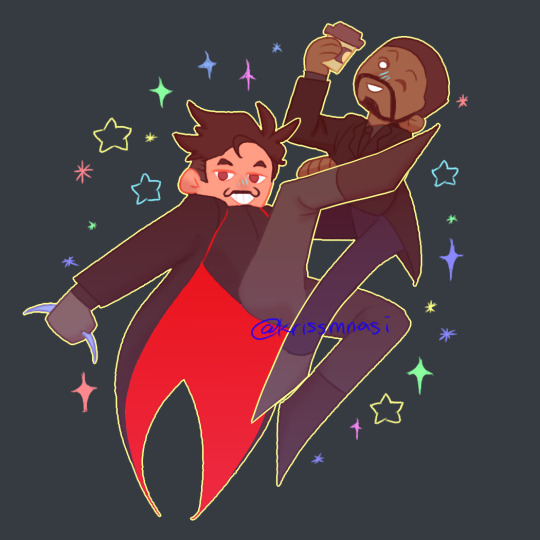



In light of recent events, you can donate $5+ to get some art from me ( you must show me proof ). Colour comes at $10.
Black Visions Collective:
https://secure.everyaction.com/4omQDAR0oUiUagTu0EG-Ig2…
Reclaim The Block: https://secure.everyaction.com/zae4prEeKESHBy0MKXTIcQ2…
NorthStar Health Collective:
https://northstarhealthcollective.org/donate
#donation commissions#paul ashworth#fever pitch#1997#mark strong#colin firth#kingsman#merlin#hamish#That b me ; ART TAG#spiderverse#spider verse#itsv#into the spider verse#peter b parker#peter parker#spiderman#spider man#gwen stacy#spider gwen#spider girl#spiderwoman#miles morales#sony#movies#stobotnik#sonic movie#agent stone#robotnik#ivo
15 notes
·
View notes
Photo



Colin Firth as Paul Ashworth and Mark Strong as Steve in Fever Pitch (1997)
85 notes
·
View notes
Photo
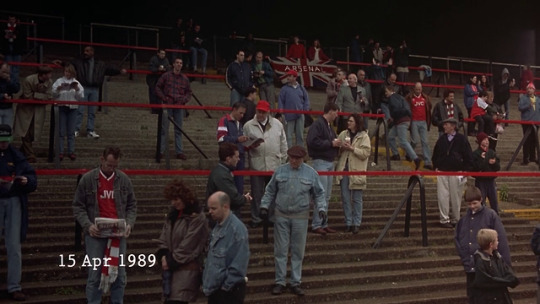
42 minutes into Fever Pitch (1997)
2018121713h57m46s713
4 notes
·
View notes
Text
To keep track: today I watched Mamma Mia 1 for the 7th time in 36 days.
#ollie's log#this time with my grandparents and in german#with 'the railway man' watched as far as I could I'm now mostly through with the stuff I had on my list#with his birthday tomorrow it's gonna have to be another colin-day but afterwards?#since nobody could tell me about any non-straight things and I can't find 'fever pitch' (1997) I don't know what else to do#on the other hand I don't know what else to start with because there isn't really anything I can picture myself getting back into#mamma mia
1 note
·
View note